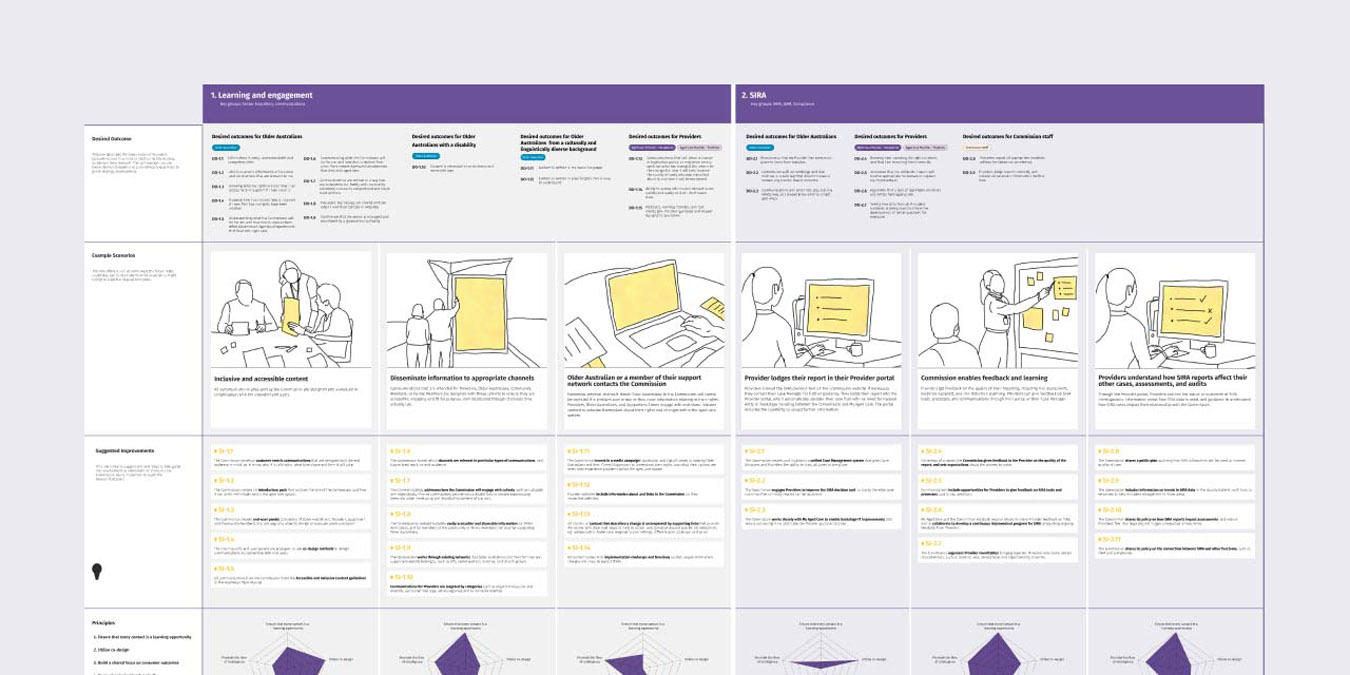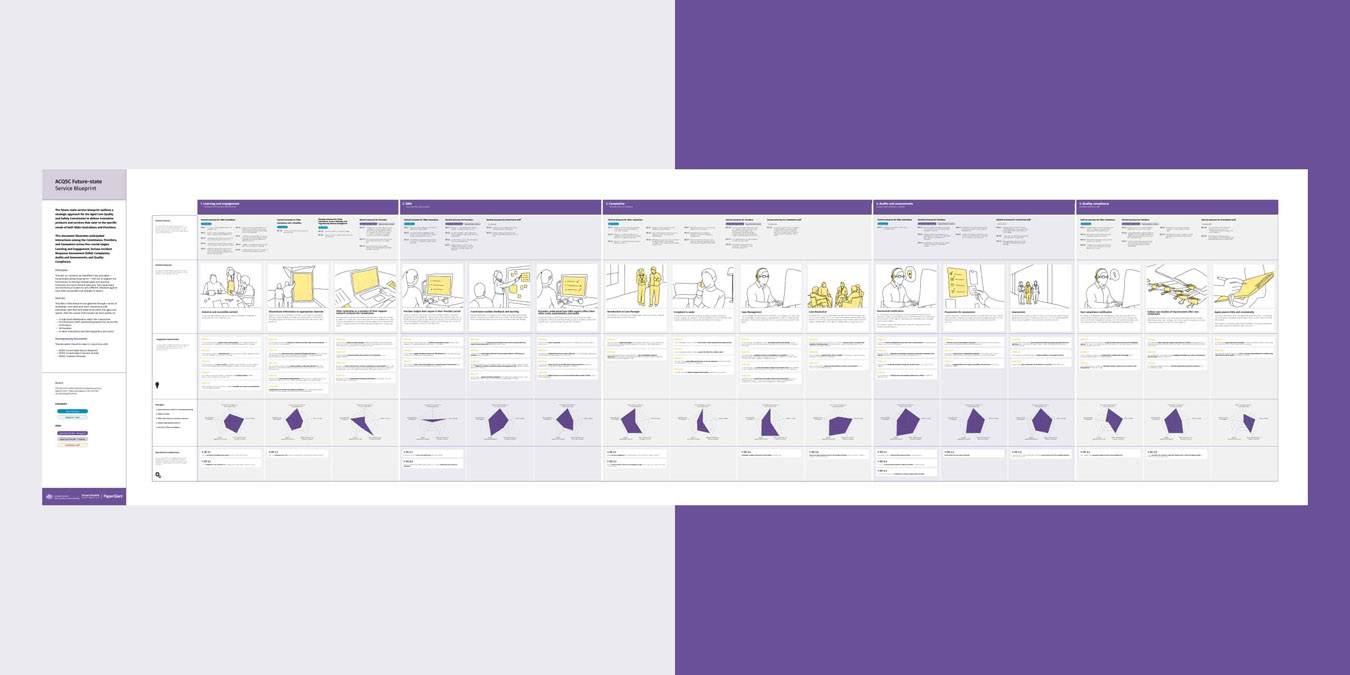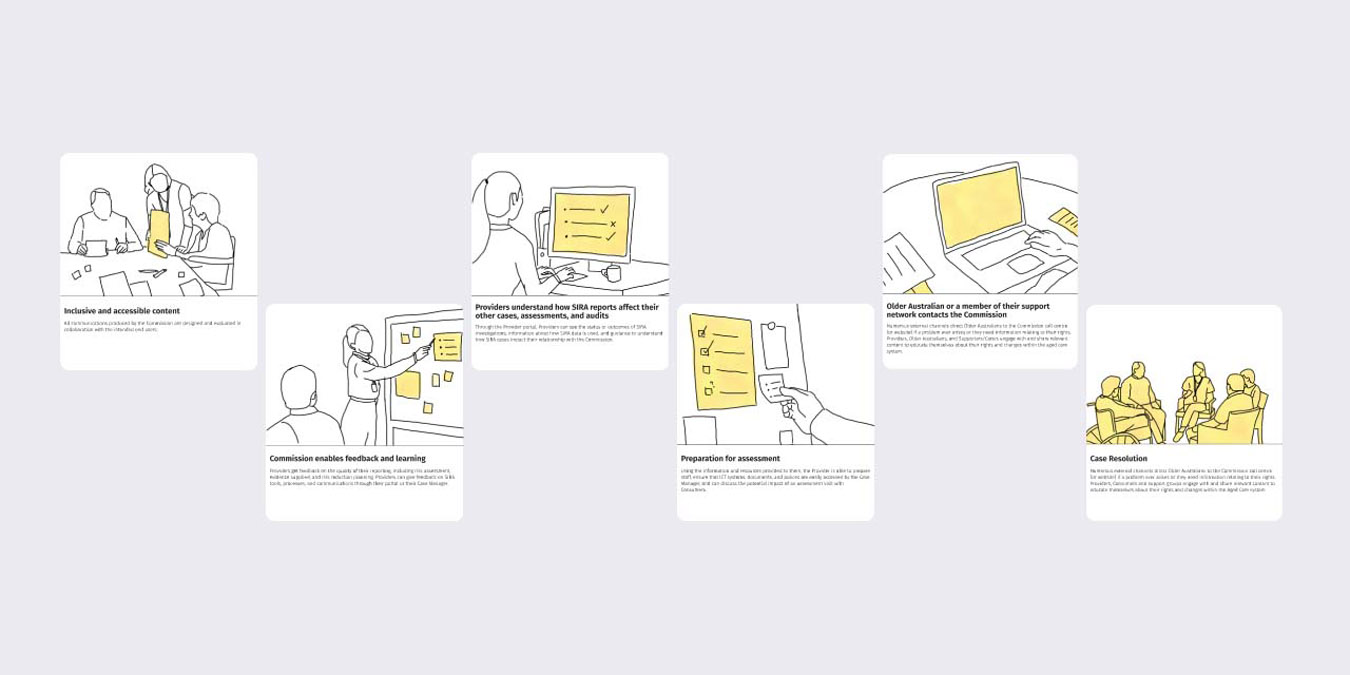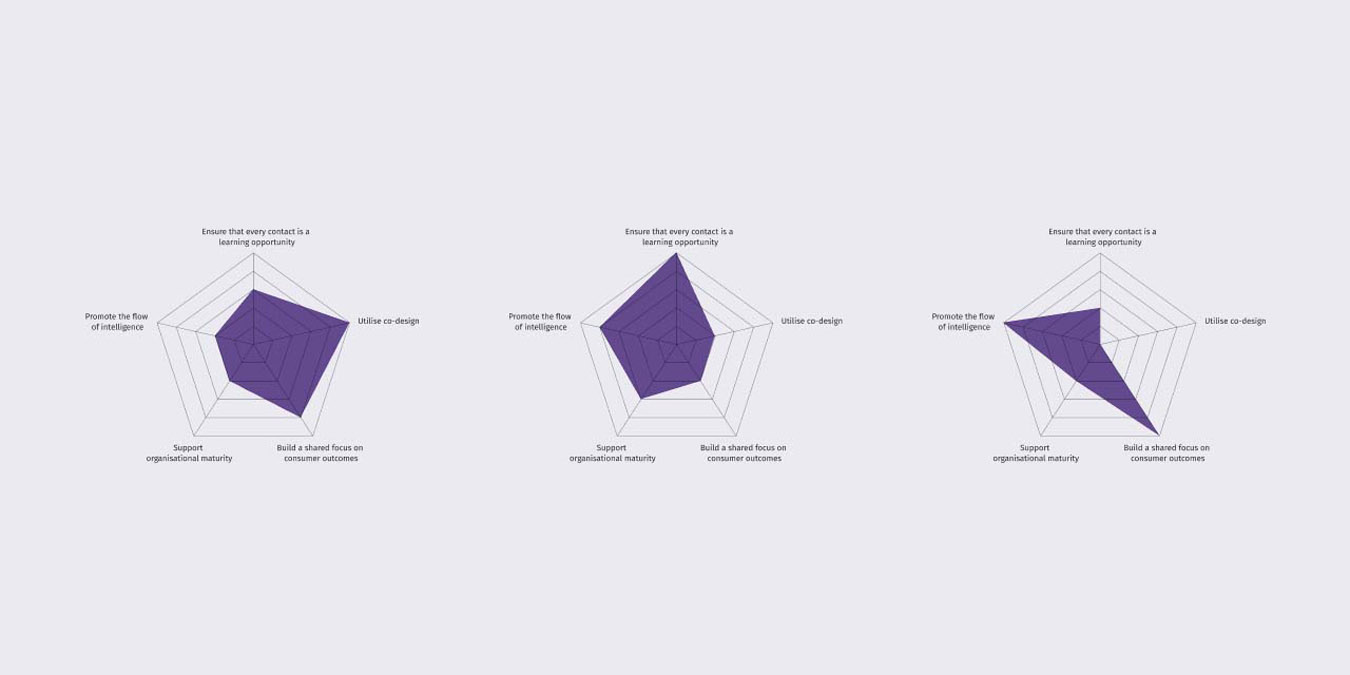PG and ACQSC collaborated to visualise the customer journey to improve their service.
PG consulted with ACQSC staff, aged care providers, and customers. PG delivered several artifacts, including Personas, a Current State Service Blueprint, a Current State Consumer Journey map, a Future State Service Blueprint, and Principles, along with a communication strategy.
Mapping customer journeys for the ACQSC was an extremely complex process involving four key parties: aged-care customers, the families and networks of aged-care customers, aged-care providers and the Commission itself.
The needs of older Australians were at the centre of this project.
PG researchers spoke to 23 executives at the ACQSC, 27 aged-care providers, 7 internal ACQSC teams (including education and compliance teams), and 21 older Australians (consumers of aged-care services.)
We developed prototypes of the Customer Service Journey Map and interventions that would improve the customer experience, allowing us to build and test ideas.
In our Current State Service Blueprint, we showed the back-end commission process when dealing with providers. Consumer journeys highlighted the interactions between consumers, providers and the ACQSC. We developed detailed personas to help the Commission understand the customers, their needs and the networks of people surrounding them as they interact with the aged-care system.
We developed prototypes and interventions for our Future State Blueprint to enhance efficiency and communication between providers, consumers and consumers’ networks. Those prototypes included everything from communications strategies to internal systems and protocols when dealing with complaints. We recommended (amongst other things): end-user advisory panels, upgrades to the existing case-management portal and new ways to help providers learn from each other and work towards best practice.






